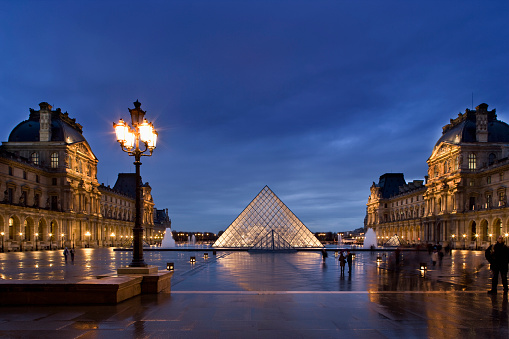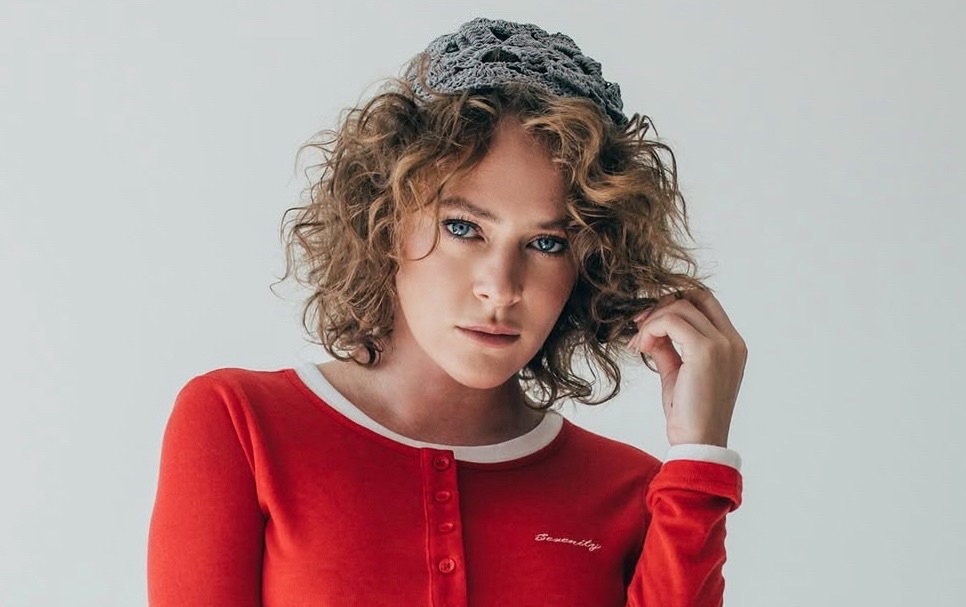If the challenge of developing a sequel to ‘Black Panther’, not just a blockbuster but a cultural phenomenon, was already complicated, the death in 2020 of its protagonist, Chadwick Boseman, raised a nearly impossible mountain to climb. And not only for the pain caused by the loss of a beloved and admired partner, and a new icon of representation, but also for the recalibration work it has meant for Marvel Studios and Ryan Coogler, who they were forced to deal with the loss of the actor as they considered how to continue his legacy as he wished.
This is how ‘Black Panther: Wakanda Forever’ was born, or rather, reborn, the result of that process of mourning and acceptance that led the entire team to find a way to move forward without their leader and keep the flame of the Wakanda, a nation and a symbol that was just born in the Marvel Cinematic Universe and could not end like this. Four years after “Black Panther” became the highest-grossing solo superhero film in the MCU (only recently surpassed by “Spider-Man: No Way Home”) and reached the milestone of Best Picture nomination at Oscar, Coogler returns to direct his sequel, which stands as a monument to Boseman, but also to the people around him who, like him, constitute the powerful metaphor of Wakanda.

Instead of hiring a new actor for the role of T’Challa, Marvel decided that the King of Wakanda would also die in fiction for the next. use that unexpected twist to build a story about the loss to bring to the screen the real process of acceptance and healing that was happening behind it. In this way, the development of ‘Wakanda Forever’ falls on the family of T’Challa and on the citizens of Wakanda closest to him, with his little sister, Shuri (Letitia Wright), collecting his testimony as a protagonist and with the greatest weight. . of the story about her and her mother, Ramonda (Angela Bassett), stepping forward as regent of Wakanda. Indeed, ‘Wakanda Forever’ is, without initially intending to do so, a story in which women hold the reins, with a mother-daughter relationship at its core, and various ways of dealing with loss that are reflected in other female characters such as Nakia. (Lupita Nyong’o) or General Okoye and the Dora Milaje (Danai Gurira).
Like its predecessor, “Wakanda Forever” is probably the most political Marvel film, with colonialism and appropriation as the great themes that structure the saga. After a painful prologue that tells the death of T’Challa (shot almost entirely in sequence and with an overwhelming Letitia Wright), the catalyst of the plot of this second part is the world conflict that arises from the greed for Vibranium, the powerful metal that it is found only in Wakanda and which the different powers try to achieve using invasive methods after T’Challa’s death. Ramonda, her family and her army vow to defend their land tooth and nail, but the appearance of a secret nation claiming to also possess Vibranium changes everything.

Enter Namora. ‘Black Panther: Wakanda Forever’ marks the long-awaited Marvel Cinematic Universe debut of what is known as Marvel Comics’ first mutant, played on the big screen by Tenoch Huerta and rewritten for the MCU with a new origin. In the film, Namor is not the king of Atlantis, but of Talokan, an underwater kingdom inspired by the Mayan culture.. Wakanda and Talokan are the protagonists of the conflict that will serve as the axis of the film, from which emerge the numerous ramifications that give shape to one of the most dense and complex episodes of Marvel to date.
A show that not only reaches the epic on a narrative and visual level, but also in its treatment of emotions, offering the opportunity to carry out a collective catharsis together with the characters and actors who give them life. It goes without saying that they all perform for and for Chadwick, putting their heart and soul into their performances, which makes for a very intense and overflowing experience. Bassett does the most gritty and visceral work in the film, all ferocity and grandiloquence (we don’t rule out an Oscar nomination), with Wright channeling his personal experience to stratify Shuri in an exercise of deep intimacy, and Gurira and Nyong ‘o represent the opposite extreme in the way of reacting to the tragedy.
Returning to Namor, Huerta stands out as the great revelation of the film, playing a nuanced antagonist (not really a villain), whom the Mexican actor confronts with great presence, passion and charisma, infusing humanity in a character much more than the villain. on duty. Each time Huerta appears on screen, the film becomes more interesting and exciting, continuing the work of Michael B. Jordan as Killmonger, with another psychologically and ideologically complex enemy. But that’s not the only novelty. “Wakanda Forever” also marks the introduction to the MCU of Riri Williams (Dominique Thorne), the new teenage superheroine who will soon star in her series, “Ironheart,” on Disney +. If the film is definitely the most serious and dramatic Marvel has given us lately, this does not mean that there is no room for humor and lightness, and to take care of it Riri, who stars with Shuri and Okoye in the most overtly comic scenes of the film. Moments that may clash a bit with the solemn tone of the rest of the film, but that bring a typically Marvelian youthful energy and welcome a comedic relief from so much sadness.

Visually, “Wakanda Forever” is practically flawless. If the first installment received criticism for some poor visual effects, this sequel raises the bar for the franchise and Phase 4 in general, with much better CGI and some particularly strong action scenes. Especially to highlight the aquatic sequences, perfectly executed (and hearing the odious comparison, infinitely better and more realistic than in ‘Aquaman’) and with moments of authentic beauty. And a little bit of suspense and terror too. Because Namor and Talokan carry a threat that can be very disturbing, especially in their first appearances in a sea plunged into darkness.where the film delves into ghostly territory with good results.
The iconography of “Black Panther: Wakanda Forever” becomes even more exuberant with new and detailed manifestations of its culture in the form of costumes (the white funeral robes are absolutely beautiful), traditions or simply through the color and textures that shape Wakanda . Without forgetting the music, again composed by Ludwig Göransson, who continues to make himself known as one of the most inspiring composers of the moment after his acclaimed work on ‘The Mandalorian’, with another sonic journey to remember. That aesthetic packaging, respect when it comes to capturing the cultures on which it is based to make it its mythology and Coogler’s good eye to create images with force reaffirm “Black Panther” as the Marvel property with the greatest identity. A project that combines the staff with what is expected from the studio, abundant connections, cameos and many surprises that reward the most loyal viewers and continue to overlap and intertwine pieces for the future of the saga.
The (inevitable) seams of a very complicated effort
Considering the impossible task that Marvel faces with this film, Coogler and his team save the day in the best possible way, drawing strength from weakness to create something truly important and meaningful beyond the usual confines of mainstream cinema. Of course, in that effort to piece together the fabric of what this sequel was to be, the seams can be uncovered. Although Wright does a good job, Boseman’s absence weighs heavily in many moments, where it’s all too obvious that the plot was designed for him. Likewise, the different deviations in the story and its number of plots and characters, mean that the film, one of Marvel’s longest at 161 minutes, is somewhat chaotic and overloaded.

Yet somehow Coogler manages to convey the feeling that everything (or almost everything) in it is important and crucial, which makes diving easier, despite its jumps in pace. It’s mostly thanks to that raw emotion that can’t be highlighted enough, that claw pumping a Marvel delivery made from deep inside. ‘Black Panther: Wakanda Forever’ closes Marvel’s Phase 4 with a climax and follows, a film that from the Marvel Studios curtain, dedicated to Chadwick Boseman, to his astonishing post-credits scene (watch out, there’s only one ), Points directly to the stomach. A precious tribute that gives us some of the most beautiful images of Marvel, high-level performances and one of its most intense stories, forging a farewell that facilitates closure, while also paving a new path for the kingdom of Wakanda and the Marvel Universe..
Note: 8
The best: It is pure passion and feeling with a message. The interpretations, the best of the UCM. Visually it is a triumph and the CGI improves a lot compared to the first.
Worse: It can get very dense and the humor, while sparse, doesn’t quite fit right in.
Source: E Cartelera
Elizabeth Cabrera is an author and journalist who writes for The Fashion Vibes. With a talent for staying up-to-date on the latest news and trends, Elizabeth is dedicated to delivering informative and engaging articles that keep readers informed on the latest developments.




